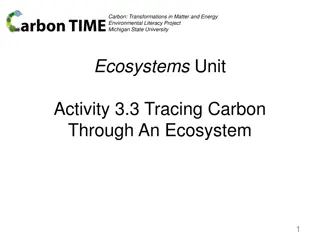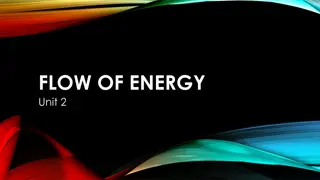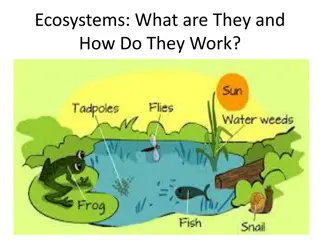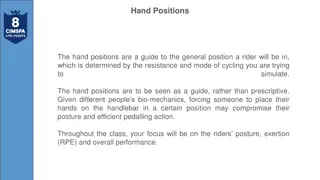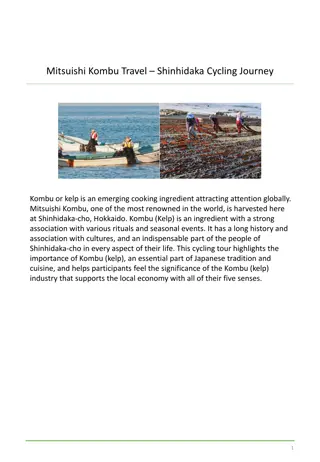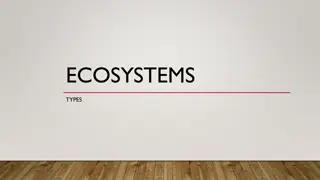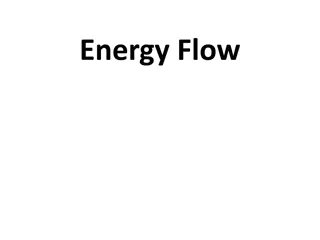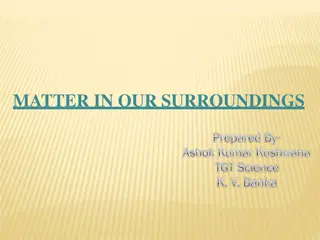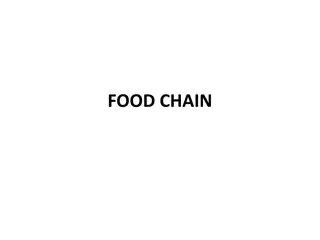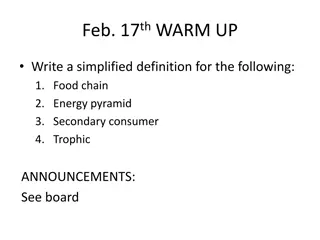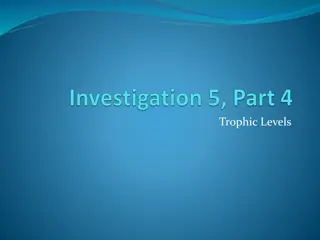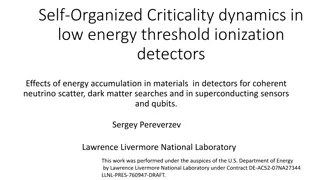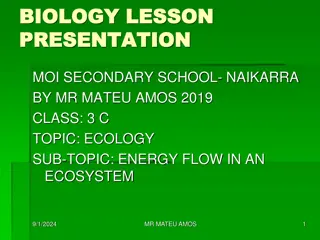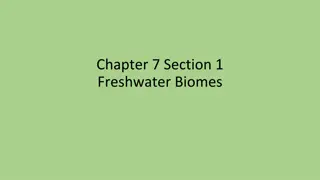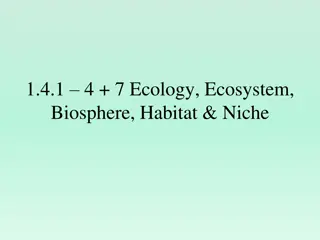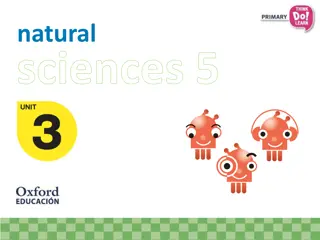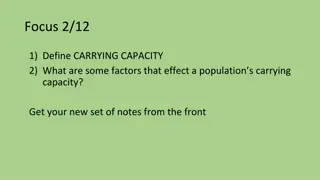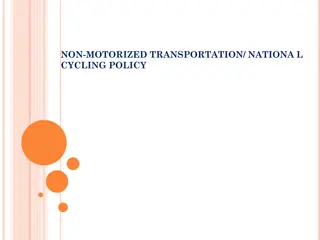Understanding the Cycling of Matter and Energy in Ecosystems
Explore the interconnected web of life within biomes and ecosystems, where organisms play vital roles in maintaining balance. Learn about producers, consumers, and decomposers, and how energy flows through different trophic levels. Dive into the world of primary, secondary, and tertiary consumers, and classify various organisms into these categories to grasp their roles in energy transfer within ecosystems.
Download Presentation

Please find below an Image/Link to download the presentation.
The content on the website is provided AS IS for your information and personal use only. It may not be sold, licensed, or shared on other websites without obtaining consent from the author. Download presentation by click this link. If you encounter any issues during the download, it is possible that the publisher has removed the file from their server.
E N D
Presentation Transcript
Lets Start with the Big Picture: Biome A geographical region that has characteristic climate, plant, and animal life Shown here are arctic tundra, savannah, and mountain biomes Biomes There can be many ecosystems within a biome!
Ecosystems Community of interacting organisms within a biome living in Balance Each organism plays a role in their ecosystem to maintain balance
Organisms Individual living things Animals Plants Eubacteria Archae Protists Fungi All organisms live in balance in ecosystems Food web within an ecosystem
Living organisms in ecosystems are called biotic components Grouped as: Producers Consumers Decomposers Eat other organisms for food Make their own food Break down dead material Autotrophs Heterotrophs Detritivores
Producers Producers make their own food through Photosynthesis by converting sunlight energy into carbohydrates which give energy to consumers
There are three types of consumers: Primary Consumers Herbivore-eats only plants (producers) Secondary Consumers-carnivore that eats primary consumers or omnivore that eats a combination of primary consumers and producers Tertiary Consumers eats only secondary consumers-the topmost carnivore in an ecosystem
Classify these Critters Primary Consumers Producers Squirrels Lions Rabbits Foxes Coyotes Trees Sheep Zebras Deer Green Algae Bobcats Gophers Insects Cows Owls Grass Tigers Pigs Flowers Mice Cyanobacteria* Humans* Secondary Consumers Tertiary Consumers Are they all easy? Do some fit in multiple categories?
Energy Flow in Ecosystems Primary Consumers eat Producers for nutrients and energy Solar Energy from the Sun Secondary Consumers eat Primary Consumers for nutrients and energy Producers photosynthesize to make carbohydrates Tertiary Consumers eat Secondary Consumers for nutrients and energy Decomposers recycle dead organic waste (biomass) Energy Transfer
Energy Cycling
Energy Flow within an Ecosystem Heat Heat Heat Sun Solar Energy Chemical Energy Chemical Energy Secondary/Tertiary Consumer Organic Waste Primary Consumer Heat Producers Organic Waste Heat Organic Waste Decomposers
Decomposition/Decay Decomposers consume dead plants & animals (biomass) to consume dead plants & animals (biomass) to recycle them back to nutrients for producers recycle them back to nutrients for producers Decomposers are usually put at the bottom of a food web, but they are very important because they cycle biomass.
Biomass Biomass is organic matter left behind when organisms die or as a byproduct of some industries. Decomposers cycle biomass back into the food web by converting this organic matter into carbon dioxide and nutrients. Energy is released in the form of heat during this process. Biomass is also considered a renewable energy source!
Nutrients that decomposers recycle back into the soil: Carbon Water Phosphorus Nitrogen These are essential to all life but are only present in finite amounts throughout the world hence the need for cycling of nutrients in ecosystems
Decomposers: Bacteria -Unicellular organisms -Can break down just about any type of organic matter -Live on land, air and sea -1 gram of soil (about a paperclip s weight) contains 40 million (40,000,000) bacterial cells!
Decomposers: Fungi -Are not plants -Does include molds -Fungi release enzymes to decompose decaying material -Fungi grow on hyphae: unseen strands beneath the surface of the material they are decomposing
Mold growth over a decaying peach & Life of Fungi
Decomposers: Earthworms Earthworms act as scavengers Earthworms breathe through their skin They do not have eyes but do have light & touch sensitive organs Earthworms are hermaphroditic which means they have both male and female organs
Composting Controlled Decomposition in your backyard! Humus Mature compost ready to deliver the nutrients from decomposed materials back to producers.
Composting requires a mixture of 1. Browns carbon source 3. Water leaves, branches 2. Greens nitrogen source 4. Air grass, food scraps
Worms are natures ultimate recyclers! Worm composing or vermiculture is just like composting, only red worms do the decomposing. Red worms can eat their weight in organic matter every day. They leave behind casings or casts that are rich in nutrients.
Why Compost? Think of different reasons that the composting cycle is important to YOU!
Why Compost? Turn dead organic waste (biomass), like dead leaves and table scraps, into a healthy, natural fertilizer for your gardens and lawns. The humus can replenish nutrients in the soil. Results: Higher crop yields Enrich soil Cleaner soil & air Suppress plant diseases Reduce waste without a landfill!
The Big Picture: Cycle of Matter Replenish Soil Organic Waste Cycling of Nutrients Compost Decomposers




